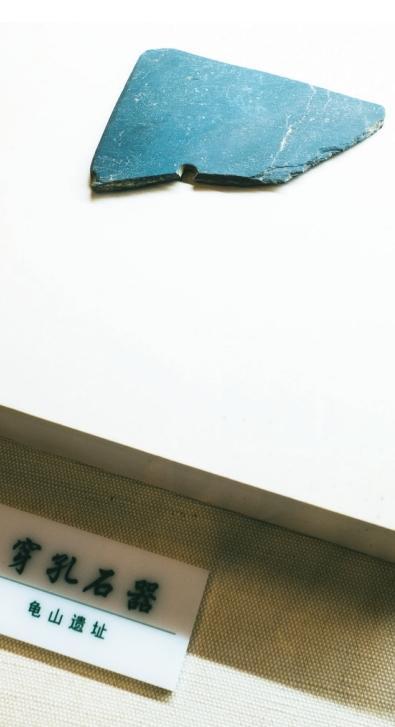Stone Chime: An example of early stone percussion instruments
Updated:2025-05-19 | Lin Kongbo, Stephanie
Name: Stone Chime
Excavation Site: Gushan site, Pingtan
Function: Percussion instrument
Era: Late Neolithic to Bronze Age
Age: Approximately 4,000 years
Archaeological Findings:
The stone chime, a perforated stone artifact, exemplifies the musical expressions of Austronesian ancestors. Hou Ronggui, deputy director of the Pingtan International Austronesian Research Institute noted that it symbolizes their pursuit of spiritual and cultural life.
Stone chimes, also called stone bells, are among China's oldest percussion instruments, classified under the "Stone" category of the traditional "Eight Tones" classification (metal, stone, clay, leather, silk, wood, gourd, and bamboo). The character "磬" in oracle bone script resembles a suspended stone struck by a mallet. Over time, its form evolved from stone to jade and bronze.
The stone chime unearthed at the Gushan site showcases the advanced perforation techniques of Austronesian ancestors. In prehistory, perforation was first applied to animal bones, shells, and other materials. Stone perforation required even more time and effort due to its hardness, demonstrating the ancestors' technical prowess.
Additional context:
The stone chime, often referred to simply as "chime," is an ancient Chinese stone percussion instrument, classified under the "Stone" category of the traditional "Eight Tones." Made from stone or jade, these instruments vary in size, often adorned with carvings and drilled with holes for suspension. Its design is both primitive and exquisitely crafted.
The history of stone chimes dates back to the matriarchal clan society of ancient times, where people lived by fishing and hunting. After labor, they would strike stones and dance in the guise of wild animals for entertainment. Over time, these struck stones gradually evolved into the percussion instrument known as the chime.

